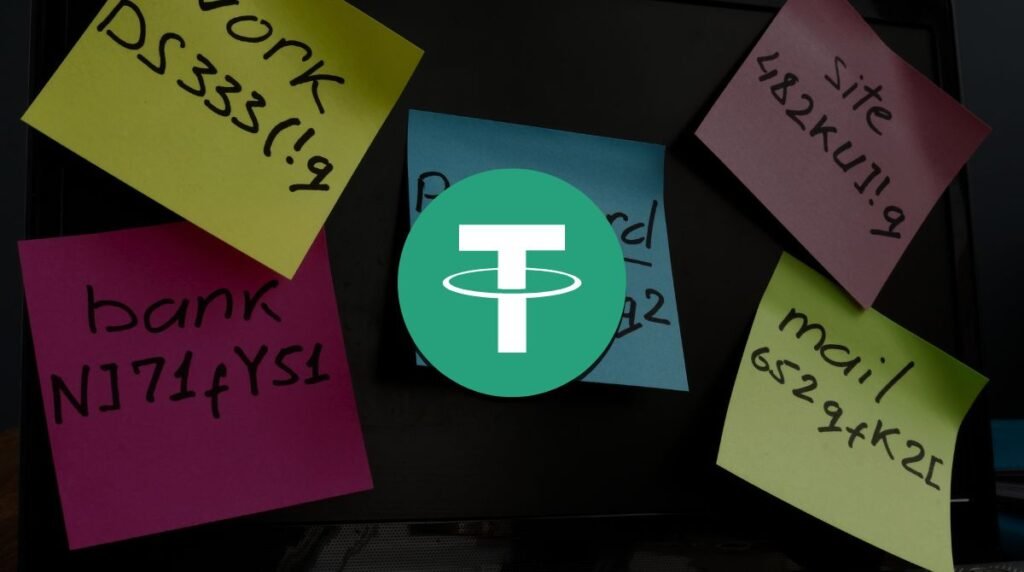Tether’s CEO, Paolo Ardoino, has announced a new open-source password manager called PearPass. This local tool is designed to help users take control of their passwords after a recent leak exposed 16 billion credentials. The move reflects growing concern around password safety—and a growing focus on user privacy in the crypto space.
What we’ll cover
Why the leak matters
A recent breach exposed around 16 billion passwords on the dark web. That breach affects countless online services, and even strong passwords may now be at risk.
Crypto users are particularly vulnerable. If hackers gain access to wallets or accounts, they can take money with little trace. Tether’s step to develop PearPass responds to growing concerns in the community .
What makes PearPass different
PearPass is open-source and runs entirely on your device. That means your passwords never leave your computer or phone.
Because there’s no cloud syncing, the risk from remote leaks or server-side hacks drops significantly. Users can manage and store their credentials without depending on large, centralized services.
Ardoino emphasized this local-first approach, saying PearPass avoids reliance on third-party vendors—especially after the latest leap in cloud-based breaches.
How this helps crypto users
Securing keys and passwords is essential in crypto. PearPass adds a layer of protection that aligns with best practices, such as using unique passwords and avoiding reuse—even across non-crypto sites.
Paired with cold wallets or hardware wallets, a strong password manager can drastically cut phishing risks. For Tether users, this helps safeguard access to USDT funds held in exchanges or wallets.
Broader signals for the crypto space
Tether’s move reflects broader trends around self-custody and privacy enhancement.
Focus on user sovereignty
Crypto’s appeal often lies in self-reliance and control. Tools like PearPass support that ethos, by reducing reliance on external systems for user security.
Rise in crypto staking and on-chain activity
As more users engage in crypto staking or DeFi, they add complexity to their accounts. Strong password hygiene becomes critical when managing multiple apps, wallets, and staking platforms. PearPass can be a cornerstone in that setup.
Getting started with PearPass
The first version of PearPass runs on desktop, with mobile support planned. Tether plans to launch the product in the coming weeks and will publish everything on GitHub.
Once it’s out, users should:
- Download the application from the official Tether repository.
- Choose a secure master password.
- Import credentials or set up new entries for exchange accounts, wallets or emails.
- Use PearPass whenever logging into crypto platforms—not just for withdrawals, but also when engaging in staking or DeFi.
Because it’s open-source, the community can review the code to verify security and suggest improvements.
Why this matters for USDT users
For Tether users, PearPass offers a way to protect keys tied to USDT balances. Strong local password tools help prevent account takeovers, which can be disastrous when moving or staking USDT.
It also shows Tether is thinking beyond stablecoin issuance—toward the broader safety of their customer base.
Frequently Asked Questions
What is an open‑source password manager?
It’s software where the source code is public, so anyone can inspect it. That transparency helps catch vulnerabilities faster and boosts trust.
Will PearPass sync passwords across devices?
No. PearPass is local-only. Users must manage their own backups, which reduces exposure to cloud breaches.
How does PearPass help with my USDT holdings?
By securing your passwords, PearPass reduces the risk of account theft—whether you keep USDT on exchanges or in wallets.
Can I use PearPass with staking platforms?
Yes. It helps you manage login credentials for wallets, staking services or crypto exchanges, strengthening overall security.



